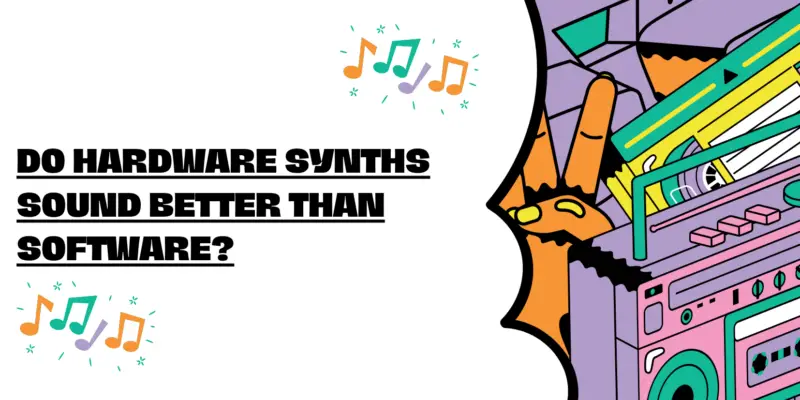The age-old debate of hardware versus software synthesizers has long intrigued musicians, producers, and sound enthusiasts alike. Both hardware and software synthesizers have their own distinct strengths and weaknesses, and the question of which one sounds better is a topic of passionate discussion. In this article, we will explore the nuances of this debate and consider the factors that influence the sound quality of both types of synthesizers.
The Hardware Synth Advantage:
- Analog Warmth: Hardware synthesizers, particularly analog ones, are celebrated for their warm, organic, and often unpredictable sound. The continuous voltage fluctuations within analog circuits create subtle harmonic overtones and imperfections that many musicians find musically expressive and pleasing.
- Tangible Interface: Hardware synthesizers offer a tactile and hands-on experience. Musicians interact directly with physical knobs, sliders, and buttons, fostering a strong connection between the artist and the instrument. This hands-on approach often leads to a more intuitive and creative workflow.
- Non-Linear Behavior: Analog circuits in hardware synths exhibit non-linear behavior, which introduces harmonic distortion and saturation to the sound. This adds character, depth, and grit to the sonic palette, making hardware synths ideal for certain genres and sonic aesthetics.
- Authentic Emulation of Acoustic Instruments: Hardware synthesizers excel at emulating acoustic instruments with authenticity. From string ensembles to brass and woodwinds, analog hardware can reproduce the nuances and subtleties of real-world instruments.
- Timeless Vintage Appeal: Vintage hardware synthesizers from the 1970s and 1980s maintain their appeal and continue to be sought after for their iconic sounds. These instruments have left an indelible mark on music history and are highly valued by collectors and enthusiasts.
The Software Synth Advantage:
- Versatility and Variety: Software synthesizers offer an incredible range of sounds and synthesis methods. They can replicate the characteristics of analog synths, but they also extend far beyond, offering wavetable, FM, physical modeling, and other synthesis techniques.
- Precision and Reproducibility: Software synthesizers allow for precise parameter control and reproducibility. Sound patches can be saved and recalled with absolute accuracy, making them ideal for studio work and consistency in live performances.
- Affordability and Accessibility: Software synthesizers are often more affordable than their hardware counterparts. They are accessible to musicians with varying budgets, and many high-quality virtual instruments are available for free or at a fraction of the cost of hardware.
- Integration and Modern Features: Software synthesizers integrate seamlessly with digital audio workstations (DAWs) and other software. They often include MIDI connectivity, automation, and compatibility with modern music production technology.
- Innovation and Updates: Software synthesizers benefit from rapid development cycles. Manufacturers can release updates, new sound libraries, and features with ease, keeping the instrument current and adaptable to evolving production needs.
Conclusion:
The question of whether hardware synthesizers sound better than software synthesizers is not straightforward. Each type of synth has its own unique strengths and character, and the choice between them often comes down to personal preferences, creative needs, and workflow considerations.
Many musicians and producers find that a combination of hardware and software synthesizers in their setup provides the best of both worlds. Hardware synths offer tactile immediacy and analog warmth, while software synths provide versatility and a vast sound palette. Ultimately, the “better” choice is subjective and depends on the individual’s artistic vision and the sonic qualities they wish to achieve in their music.


